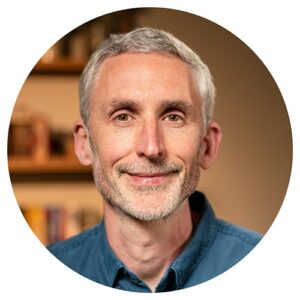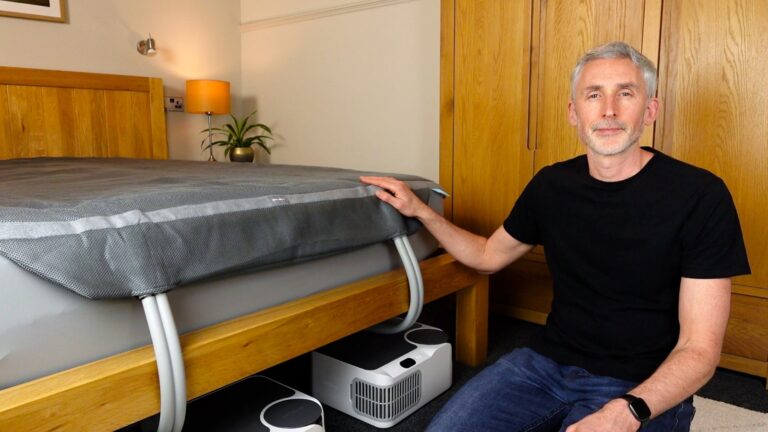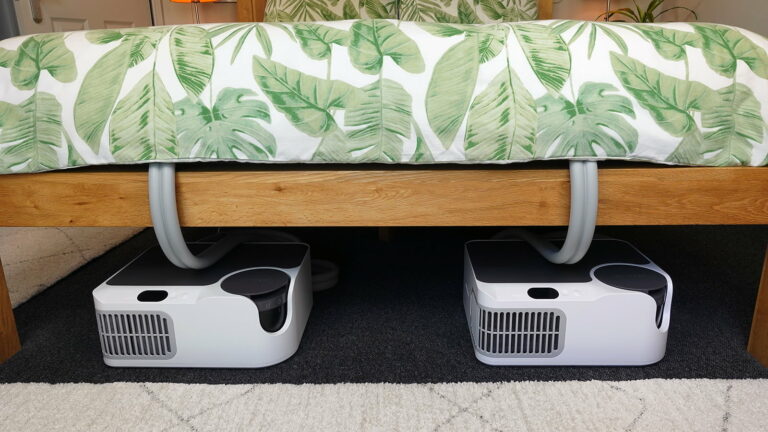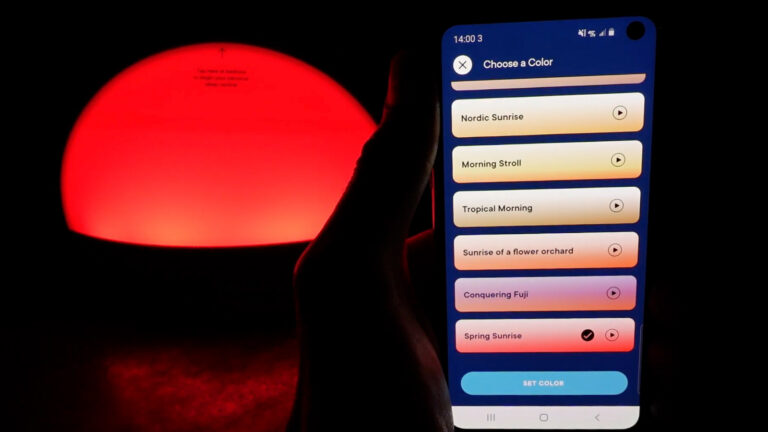Disclosure: My website is reader supported. If you purchase a product after clicking a link, I may receive a commission, at no extra cost to you. Learn more.
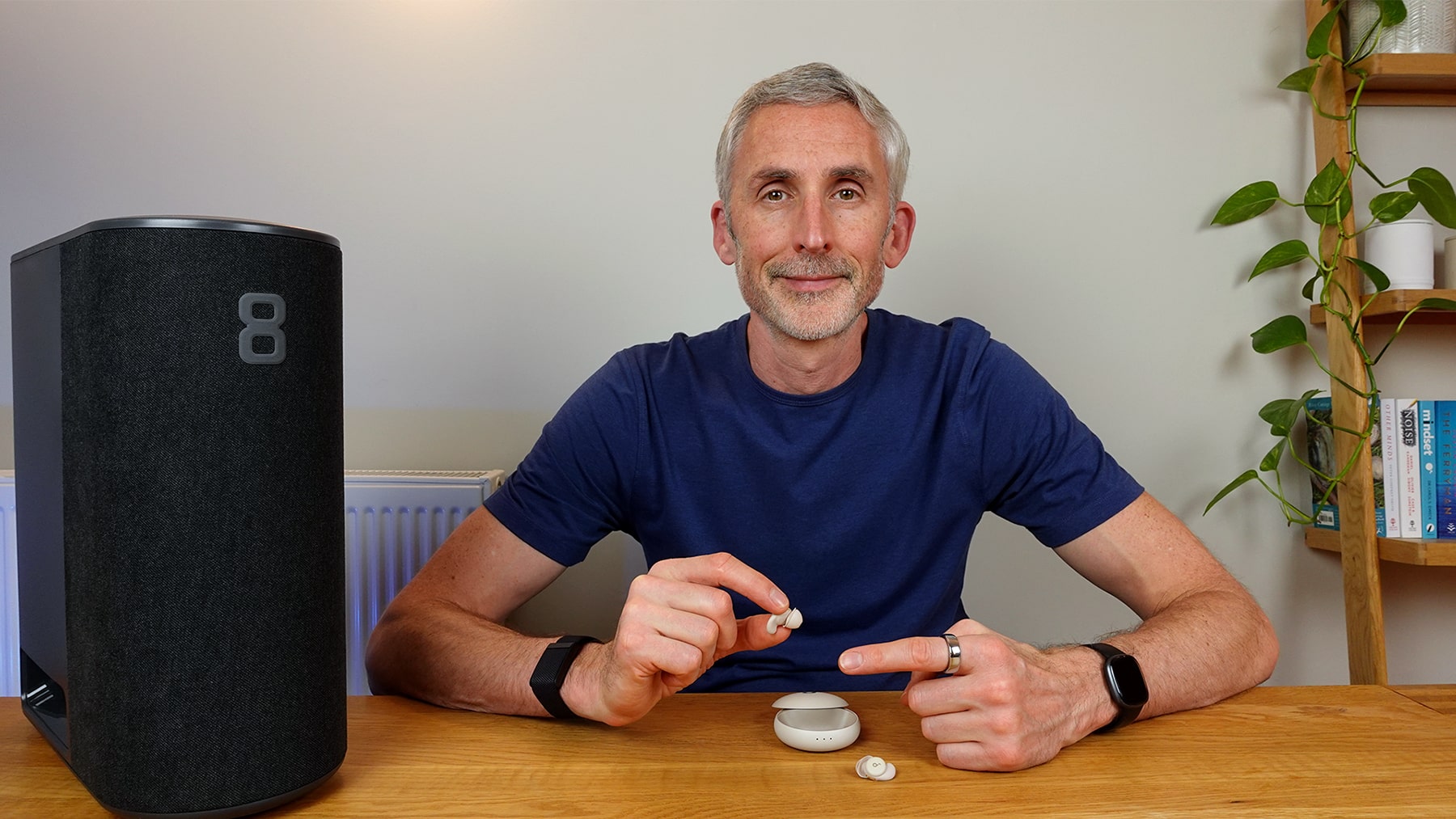
In the photo above, you can see the five sleep trackers I’ll be discussing in this article. From left to right: Eight Sleep Pod 3, Whoop 4.0, Soundcore Sleep A20, Oura Ring 3, Fitbit Versa 4.
And in case you’re wondering, yes, those are headphones included. But not because their sleep tracking is good. More on that later!
Contents
Introduction
In this article, I’ll be looking at five very different sleep trackers, all of which I’ve personally used during the last year, and a couple the year before too.
There are many sleep trackers to choose from nowadays, so I thought it would be useful to compare some different styles rather than five smartwatches, five activity monitoring straps, or three rings.
Before we get to each one, there are a few key points to make regarding all of them.
Firstly, I think it’s good to see sleep and activity tracker data and suggestions as exactly that – suggestions. You need to listen to your own body at the end (or start) of the day. For example, the readiness score doesn’t take into account your life commitments and schedule.
Secondly, it’s impossible to do a complete and direct comparison because they don’t all measure the same biometrics or report the data in the same way. There are some overlaps, but you can’t compare every detail of each device with the other four.
Thirdly, when it comes to sleep stages, judging the accuracy is also impossible unless you take them into a sleep clinic and they agree to compare your devices with their gold standard measurements. For most everyday consumers, that will never happen.
Some people try to judge their accuracy by comparing multiple trackers. While this is interesting, experience has taught me that the sleep trackers sometimes line up in a remarkably similar way, only to be completely different the next night. So unless you compare the data over a very long period of time, the sleep stage tracking of different devices might look very similar or completely different.
So, what can you compare?
Personally, I like to do the ‘can you get the basics right?’ sleep tracking test. I keep a manual sleep diary and see if they appear to accurately record when I go to bed, fall asleep, wake in the night, wake up, and get up. Perhaps most importantly of all, however, is if their reporting reflects how I actually feel the next day.
You can also compare the style and comfort, features and what they record, how easy and useful the app is, battery life, price, and who might like each tracker most.
Those are the key points I’ll focus on then. I’ll explain what I do and don’t like about each tracker, which ones I’m going to keep using, and who might like or dislike them.
In the photo below, you can compare the four wearable trackers. The Eight Sleep isn’t present because you lie on it rather than wear it.
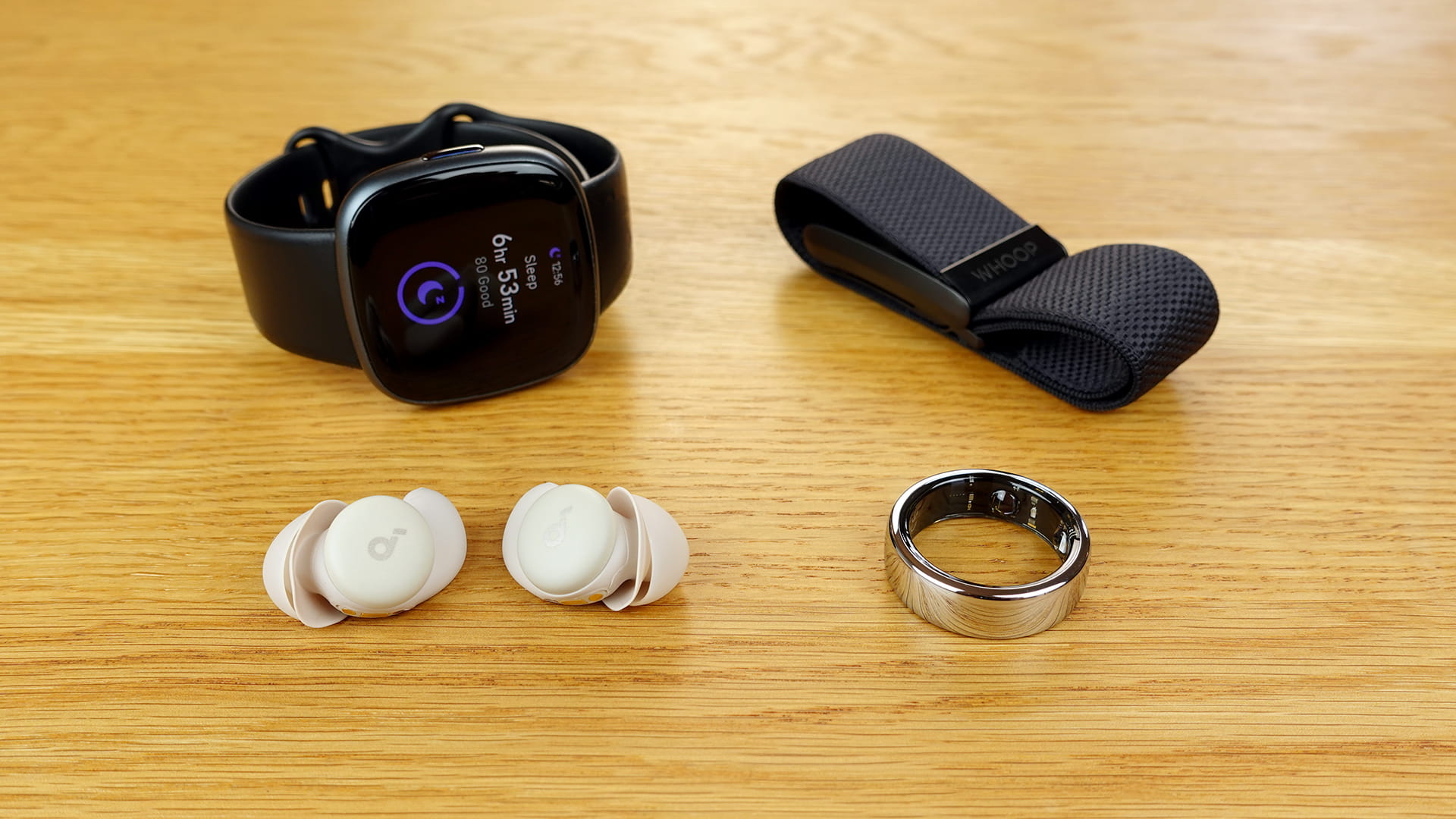
Oura Ring 3
The best wearable sleep tracker overall
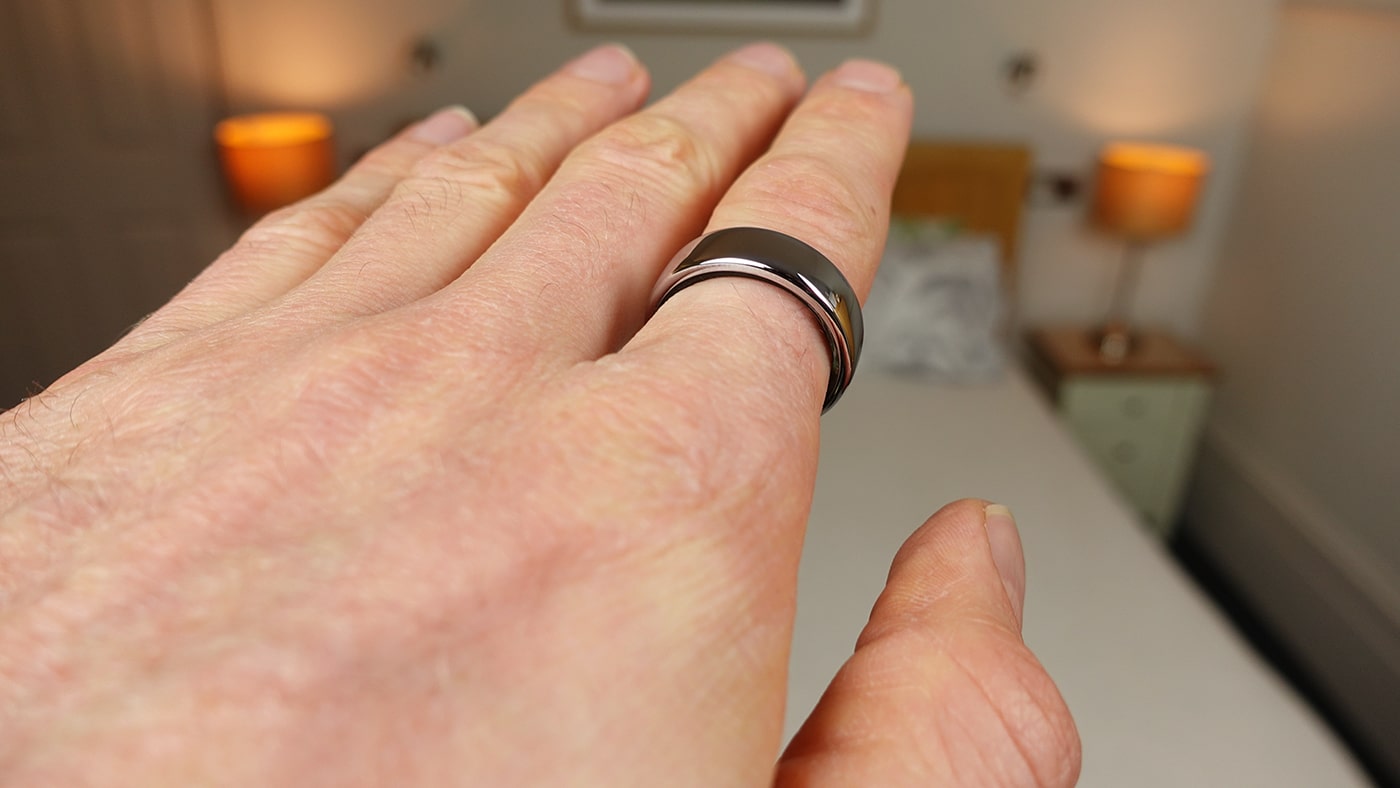
The Oura ring is my new personal favourite sleep tracking device. However, it’s still not perfect and there are some points that bother me about it.
There are three main reasons it has impressed me so much where sleep tracking is concerned.
Firstly, it passed my simple, but important ‘can you get the basics right?’ test with flying colours. For an entire week, every time I scribbled all over my notepad with my eyes half shut that I was in the bathroom at 4 a.m, the Oura got it right.
It was also the most accurate of all the devices in terms of when I believe I probably fell asleep after stopping reading. And it was good at detecting when I woke up and lay quietly in bed, or got up to make a coffee, then went back to bed. It never seems to record lying still in bed reading as sleep.
Getting the basics right means I’m more inclined to think the sleep staging, trends over time, and the recommendations in the app are accurate enough to spend my time looking at them.
In the screenshot taken from my app below, there was a clear waking around 4 a.m. that night, which I know was true as I physically got out of bed.
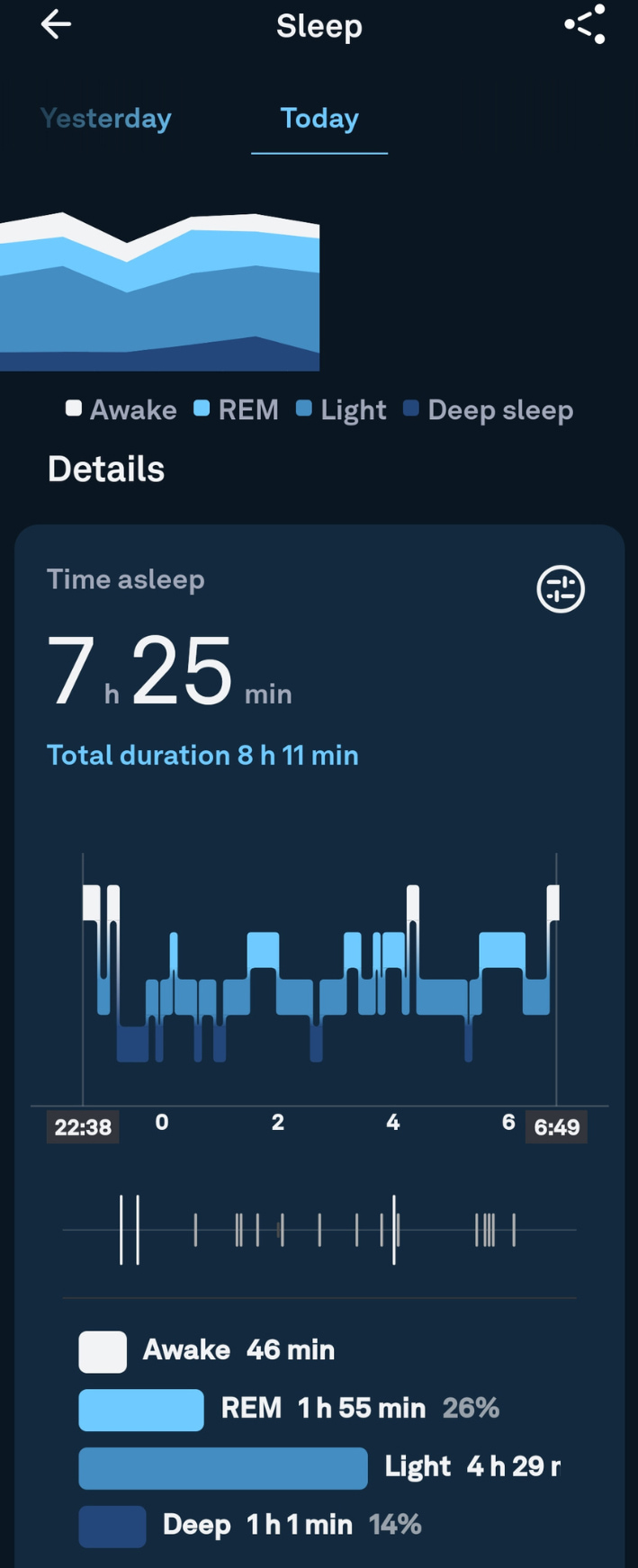
The second main point I like is the app itself, in terms of the large amount of biometric data it offers, the way it’s presented, and the actionable tips.
I find the daily readiness score very useful, as well as the daytime stress measurements. It’s great having actual sentences giving you some advice on how to go about your day, rather than leaving you to work out what the data means.
It’s also useful to have the library of meditations, with feedback on how you feel afterwards. I have a suspicion the voices are AI generated, but when you overlay a water track, they are still good.
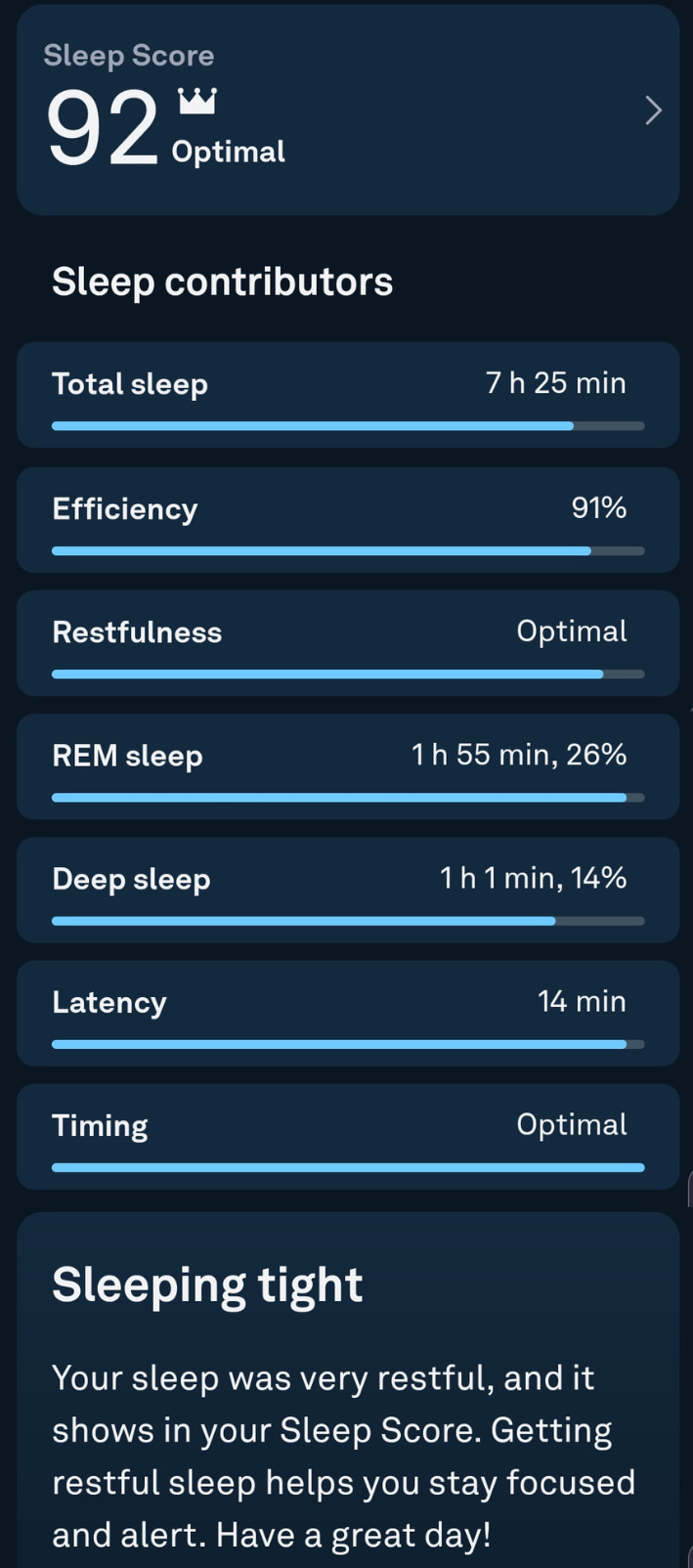
Now for the points I don’t like so much. While I appreciate the activity tracking, heart rate, and heart rate variability monitoring, I find it overcounts steps. More importantly, I can’t use the ring when weight training or climbing, two activities I enjoy. For that reason, I’m still deciding which activity tracker to pair it with, as I like to wear a watch anyway.
Secondly, it’s expensive to buy, with a monthly subscription fee. Thankfully, the subscription is less than the Eight Sleep, Whoop 4.0, or Fitbit, but I still wish it didn’t exist at all.
Finally, the battery, while good at 4-5 days life on average, can only be charged using the ring stand.
So who might like the Oura Ring 3? If your main goal is accurate sleep tracking rather than sports tracking. If you’re happy to wear a ring that’s chunkier than average. If you’d like a pretty app interface that’s relatively easy to understand, full of practical tips for you, and useful insights into what other Oura wearers find affects their sleep.
Whoop 4.0
Best if your main focus is fitness or sport, with in-depth sleep and health tracking
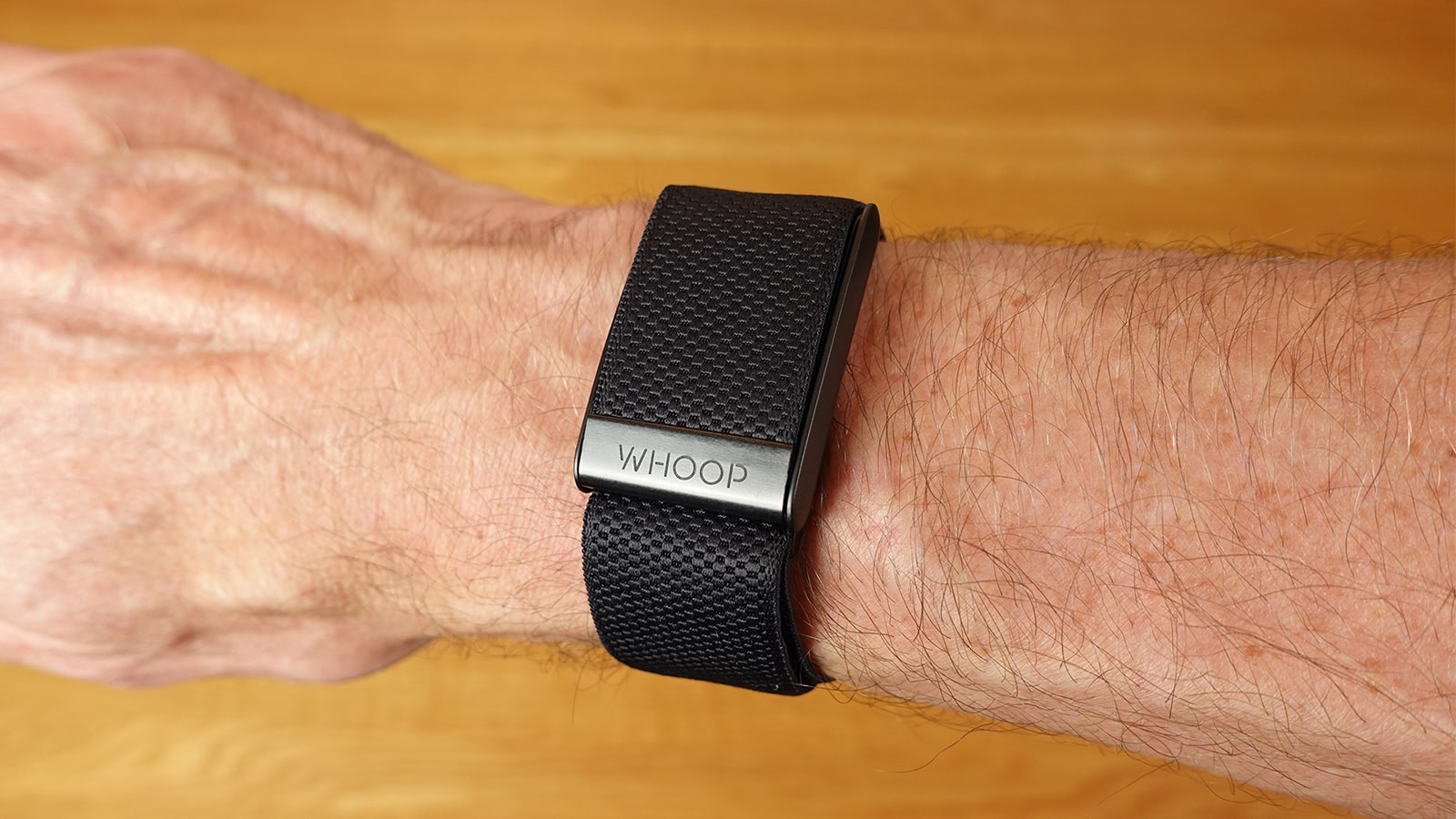
The Whoop 4.0 has all of its bell and whistles on the inside rather than shouting style from 20 meters away. Even though it’s worn on the wrist, there’s no watch face or buttons to play with.
That may be a good thing if you don’t want a bulky smart watch to distract you or get in the way, or a bad thing if you only want one device on your wrist and you need it to at least tell you the time.
When you open up the app, it’s a different story though. I thought the Oura was a step up from my Fitbit with all its metrics, but the Whoop takes it even further, with more screens, more detailed graphs, and some clever extras like the insights and AI coach.
When it comes to sleep, I found the Whoop is very good at catching my wakings in the night, especially when they involve getting out of bed. It also does a good job of recording when I (probably) fell asleep and (definitely) wake up in the morning.
These measurements are often very closely aligned with my Oura ring. As an example, the night before writing this, the Oura recorded 7 hrs 25 mins sleep and the Whoop 7 hrs 19 mins. My Fitbit seemed to go on strike, measuring just 6 hrs 45 mins, which I don’t believe because I feel good today, and don’t when I have that little sleep.
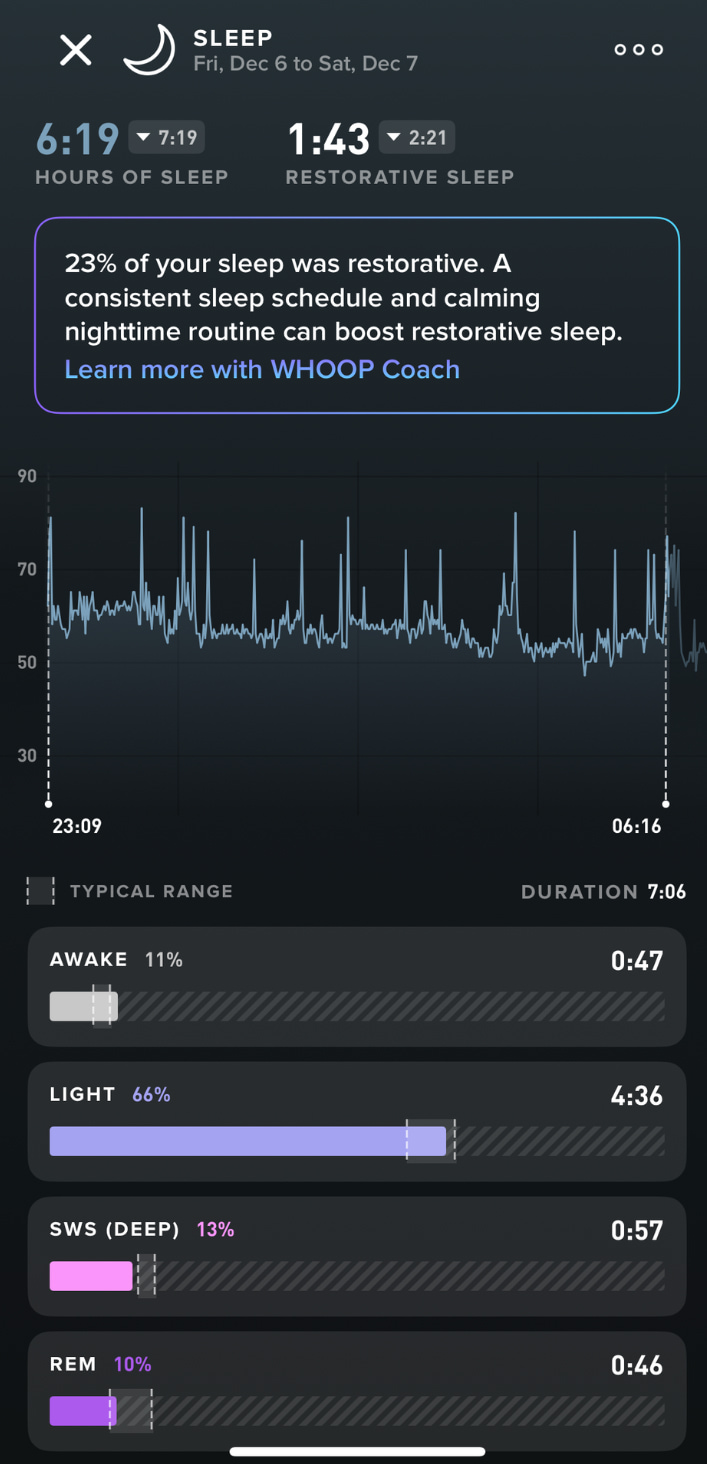
The Whoop app does take quite a lot of time to get used to, however, For starters, they have main categories of recovery and strain, so you need to understand what those actually mean. Some of the graphs that open up in those sections are confusing, and require reading or watching guides to understand.
However, it also has some very clear graphs for key metrics like heart rate, heart rate variability, and sleep stages.
My view is that the Whoop is much better than the Oura or Fitbit for activity. for starters, I can wear it for any of the exercises I do, which is important.
I also love how it has a huge range of activities you can start and track, including rarer ones like cleaning and circus arts. Finally, recognition that there is more to activity than just the sports included in the olympics.
With a 4-5 day battery life, and a clever way to remote charge the strap with the portable battery, there’s less downtime with no tracking happening, which is a first for me.
In the screenshot below, it’s clear my recovery is lower than usual today. Interestingly, I did 90 minutes of exercise later in the evening than usual yesterday, so that makes sense to me.
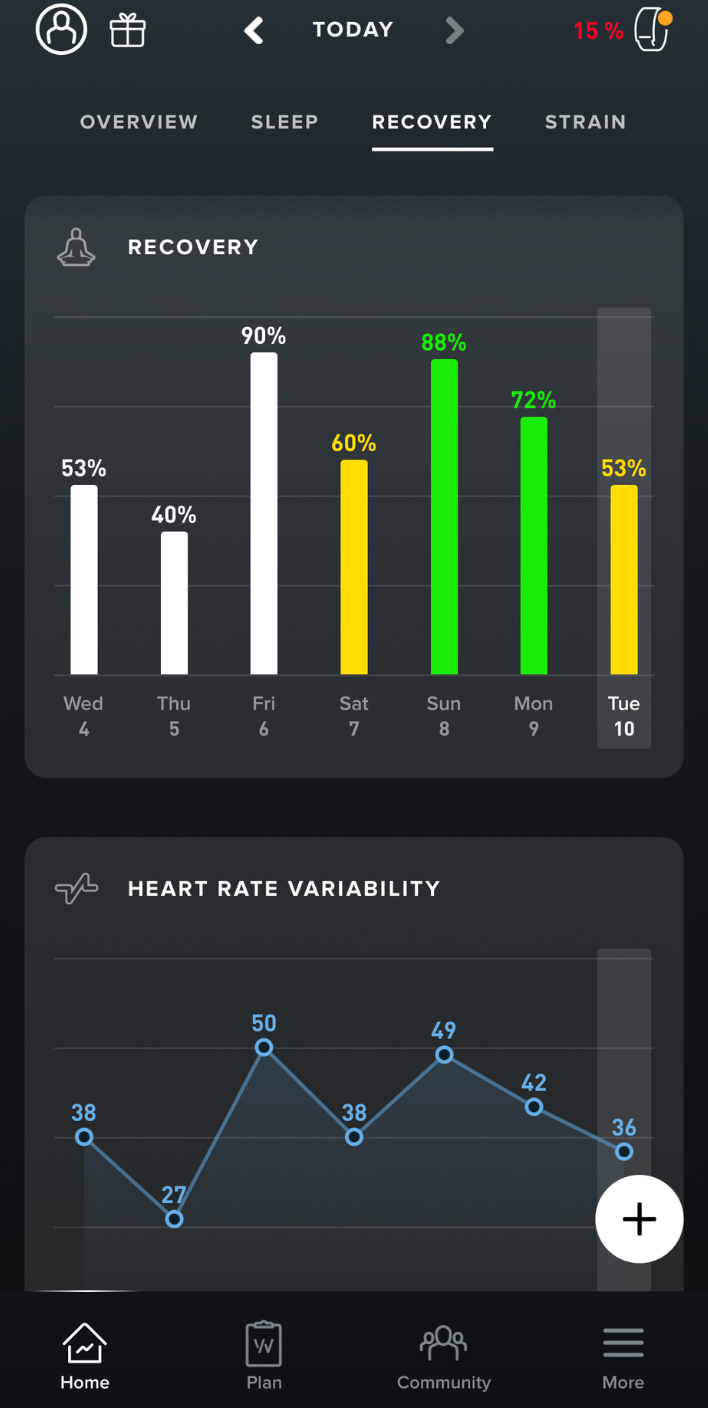
My main criticism of the Whoop is that I’ve had to wear a device on each wrist for a while now because I like having a smartwatch, and it just feels a bit wrong to wear two devices on my wrist all day, every day. While I don’t mind doing it while testing new sleep trackers, I wouldn’t choose to do it for years on end.
I can understand why Whoop chose to focus on tracking and remove all the smartwatch stuff for serious sports people, but I think it could be an issue for many people who want to wear some kind of watch too.
If it was cheap, it would be fine to maybe wear it just for sports. But the Whoop has a subscription model that makes it more affordable than the Oura initially, but more expensive over multiple years. So if you need a smartwatch as well, that’s an issue.
Secondly, as I mentioned, the app takes some getting used to. While I personally love all the metrics and the actionable insights, highlights, and suggestions, it could be overwhelming for some people.
Overall then, I think the Whoop is perhaps best suited to those with a more serious interest in activity or sports, but who also value sleep and recovery. For the everyday user who is mostly interested in sleep, it might be too much – especially if you want to wear a watch and don’t like ongoing subscription fees.
Fitbit Versa 4
Combines activity and sleep tracking with smart watch features
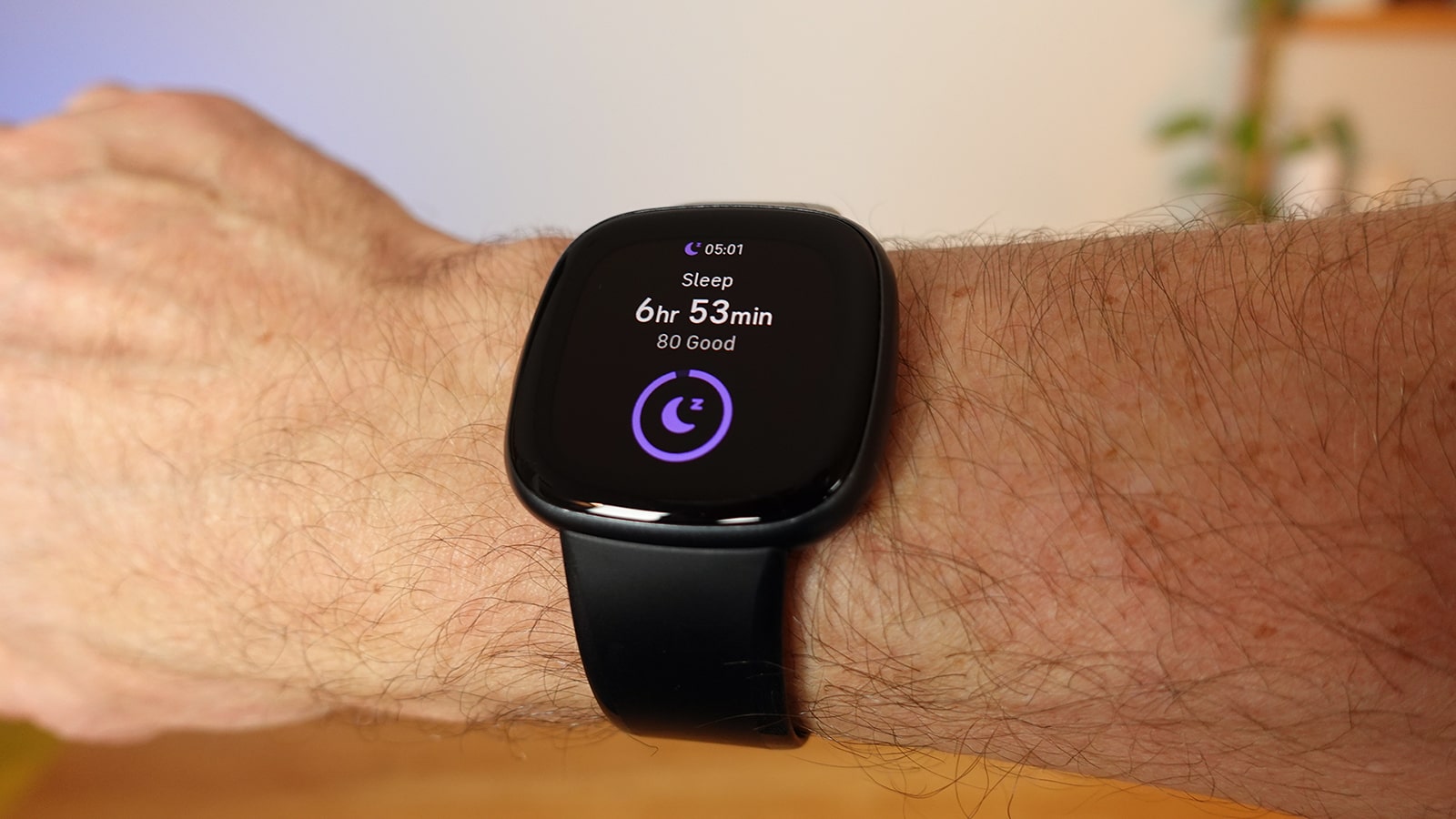
I’ll be the first to admit that I’ve been in a bit of denial about my Fitbit for a while now. Ever since Google bought out Fitbit, they have slowly but surely changed or removed several things I really liked.
I’ve used Fitbits on and off for many years, and particularly loved the Versa line. I got a lot of use out of all four of them, so it saddens me that Google have said they won’t be making a Fitbit Versa 5. They will apparently continue with the Inspire and Charge lines, but the existence of the Google Pixel watch makes me wonder how long for.
Anyway, what changed? The main issue for me was the way the sleep stages graph changed. It used to be very clear, but there’s something about the latest versions that I struggle to connect with. The bars, dotted lines, and times are confusing, and it’s not immediately obvious what time you got into bed or fell asleep.
In the screenshot below, you can see my sleep stages last night. If you’re new to Fitbit, the timings aren’t very clear.
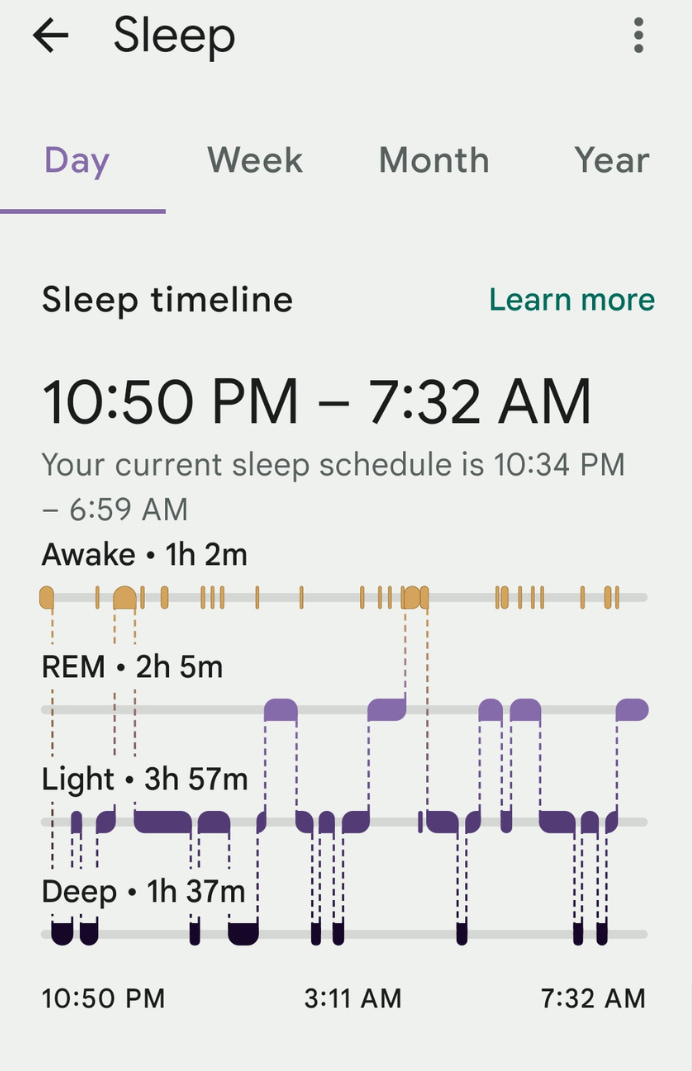
On the plus side, the Versa 4 has always seemed quite accurate at spotting wakings. It also got the 4 a.m. bathroom trip right that I recorded in my manual sleep diary last night, for example.
And while the daily sleep stage graph is somewhat messy, I do still like the simplicity of the longer time scale reporting. In the screenshot below, for example, it’s obvious which months I hit my nightly goal of 7 hrs 10 mins sleep on average.
Another point I’ve always liked about the Fitbit is the benchmarking. Being able to compare your sleep stages with other people your age and gender, as well as your own 30 day baseline, is interesting and often reassuring.
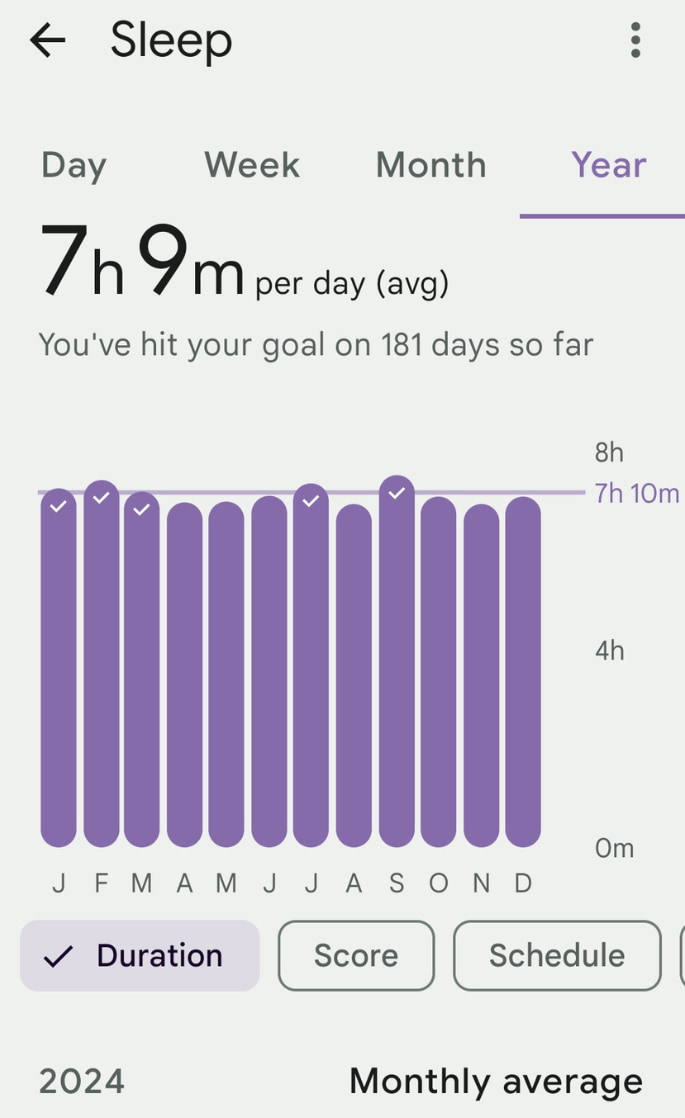
As a smartwatch, I know there are more advanced choices out there, but the Fitbit Versa always did what I needed it to. Tell the time, show my basic stats like steps and heart rate on the watch without needing to open an app, and set alarms, timers, and a stopwatch. However, at some point, they removed third party app integration, and some favourites of mine, such as the incredibly useful dimmable torch, disappeared.
For activity tracking, I’ve always found the step count good enough for basic daily use and reminders to move. However, I could never count on it for intense exercise, as the heart rate monitoring couldn’t keep up.
More importantly, the app, biometric tracking, insights, and coaching of the Oura ring and Whoop 4.0 seem much more advanced and useful than the Fitbit to me now. Even just visually, those two are leagues ahead.
Overall, the Fitbit Versa 4 has served me well, especially with its solid 6 day battery life (on average for me). If you do still want to pick one up, it costs less than it used to as it’s been around for a while, but there’s still a monthly or yearly subscription fee to access all of the features.
With that in mind, it may be worth considering the Charge or Inspire lines if you want a Fitbit that Google have said they will continue with for now.
Personally, I’m on the lookout for a new watch to accompany my Oura ring. Whether that’s a Fitbit/Google device or a different brand altogether remains to be seen. I’m in no hurry though because I’m clearly still not quite ready to say goodbye to my Fitbit Versa 4.
Eight Sleep Pod 3
A smart bed heating and cooling system with sleep tracking

The Eight Sleep Pod 3 is a lot more than just a sleep tracker. Arguably, the main features revolve around heating and cooling the bed in a mattress pad, with a central hub unit that controls the water temperature and houses many of the smart features.
My partner and I used ours for nearly a year before I decided to try a different system. We both found it very useful because of the way we could control the temperature on our own side of the bed independently. I would regularly cool my side while she warmed hers, which is the main benefit of bed cooling and heating systems in general.
But, we’re here to talk about sleep tracking, and I found the Eight Sleep does that very well. It was particularly good at correctly identifying when I was in bed relaxing or reading, or when I was asleep. As I mentioned before, sleep tracking devices need to get these basics right for me to take any notice of the harder/impossible to subjectively confirm metrics, like the sleep stages.
Interestingly, I often found that the sleep stages of the Eight Sleep and Fitbit Versa 4 aligned quite well. The Fitbit always seemed to give me less total sleep time, but my Oura ring and Whoop have been making me think recently that the Fitbit perhaps records too many wakings. On a personal level, I usually found that the Eight Sleep’s sleep score matched how I felt in the morning, though it perhaps gave me a higher score than I would have done myself sometimes.
It’s important that the sleep stage tracking of the Eight Sleep is accurate because it uses an autopilot feature to automatically adjust the temperature depending on the sleep stage you are in. For that to work, it needs to be accurate rather than just guessing and randomly changing the temperature of your bed during the night!
Fortunately, I’m happy to report that I do feel like I slept better over time using the Eight Sleep, so perhaps the autopilot and sleep tracking were accurate enough for the whole system to work its magic.
In the photo below, you can see how a typical daily sleep stage graph looks on my Eight Sleep app.
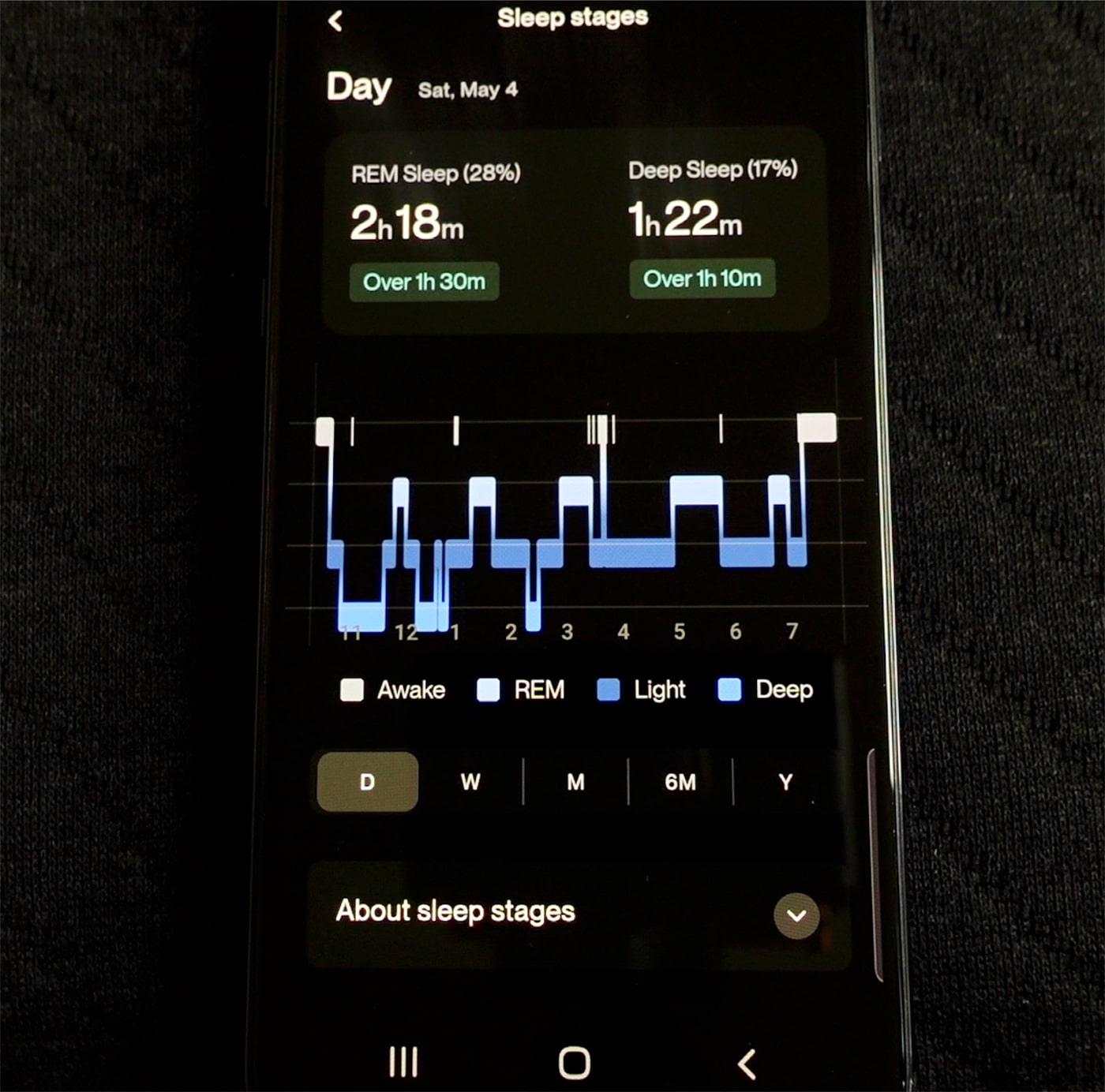
As well as sleep tracking, the pod will also track the key health metrics of heart rate, heart rate variability, and respiration. It also detects snoring, and the latest Eight Sleep Pod 4 Ultra can even incline and decline to help with snoring.
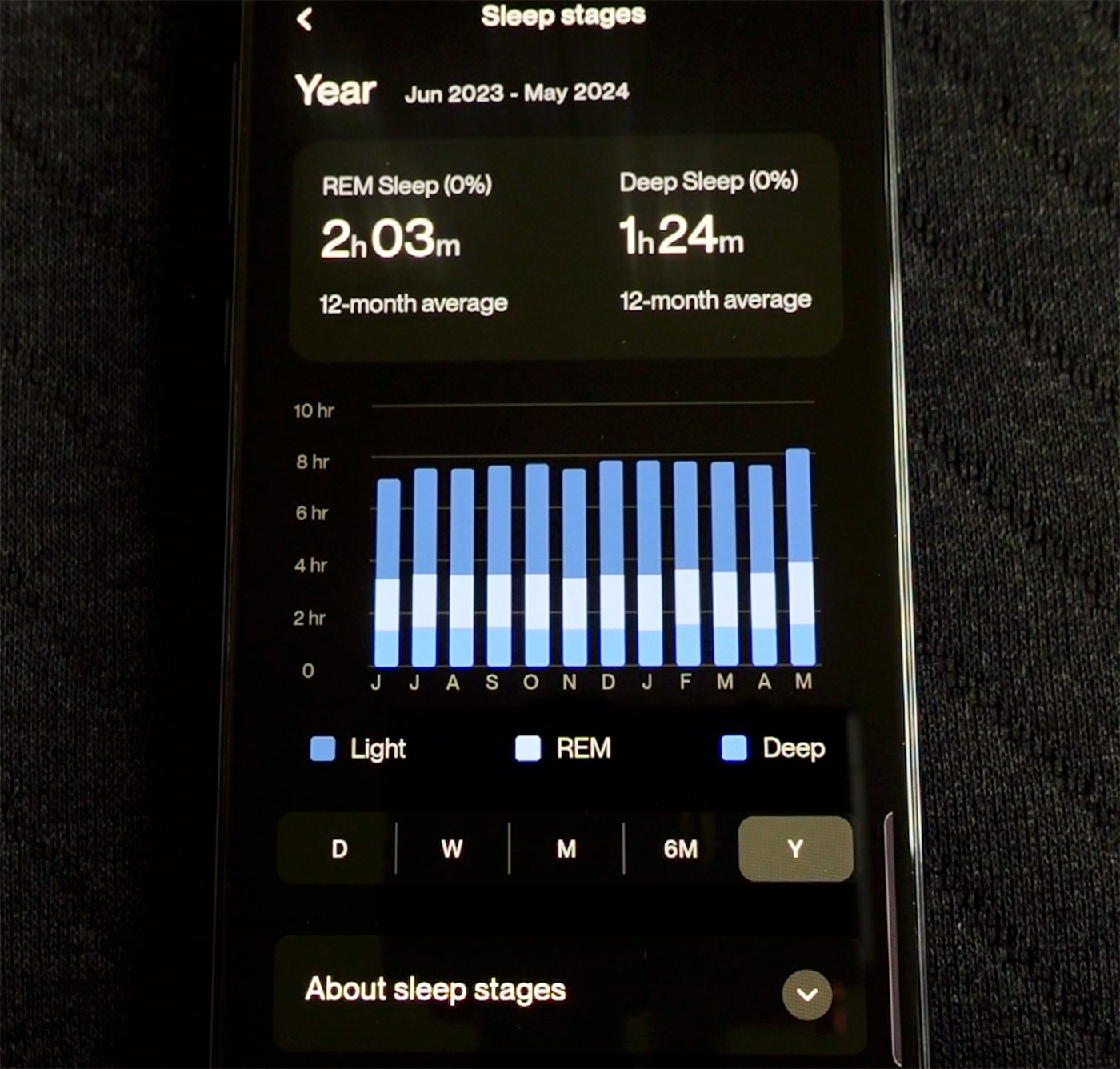
As for the downsides, the most obvious one is the price. As it’s also a bed cooling and heating system, it’s significantly more expensive than all of the wearables, and also has a monthly subscription fee. The prices of all the devices changes over time, but to give you an idea, for the same initial price you could buy all of the other devices in this article and a few more too.
The other downside is that it clearly doesn’t do activity tracking, so you would still need a wearable if you wanted to track anything during the daytime as well.
Finally, the fan does make some noise. It’s quieter than other bed climate control systems I’ve tried, but it’s not silent.
On balance, this is one for those with a large budget first and foremost. And really, temperature has to be a major issue for you in bed to warrant getting it. I wouldn’t buy an Eight Sleep if the only thing you wanted it for was the sleep tracking and health metrics.
Read my full Eight Sleep Pod 3 review
Soundcore Sleep A20
Great sleep headphones, but inaccurate sleep tracking
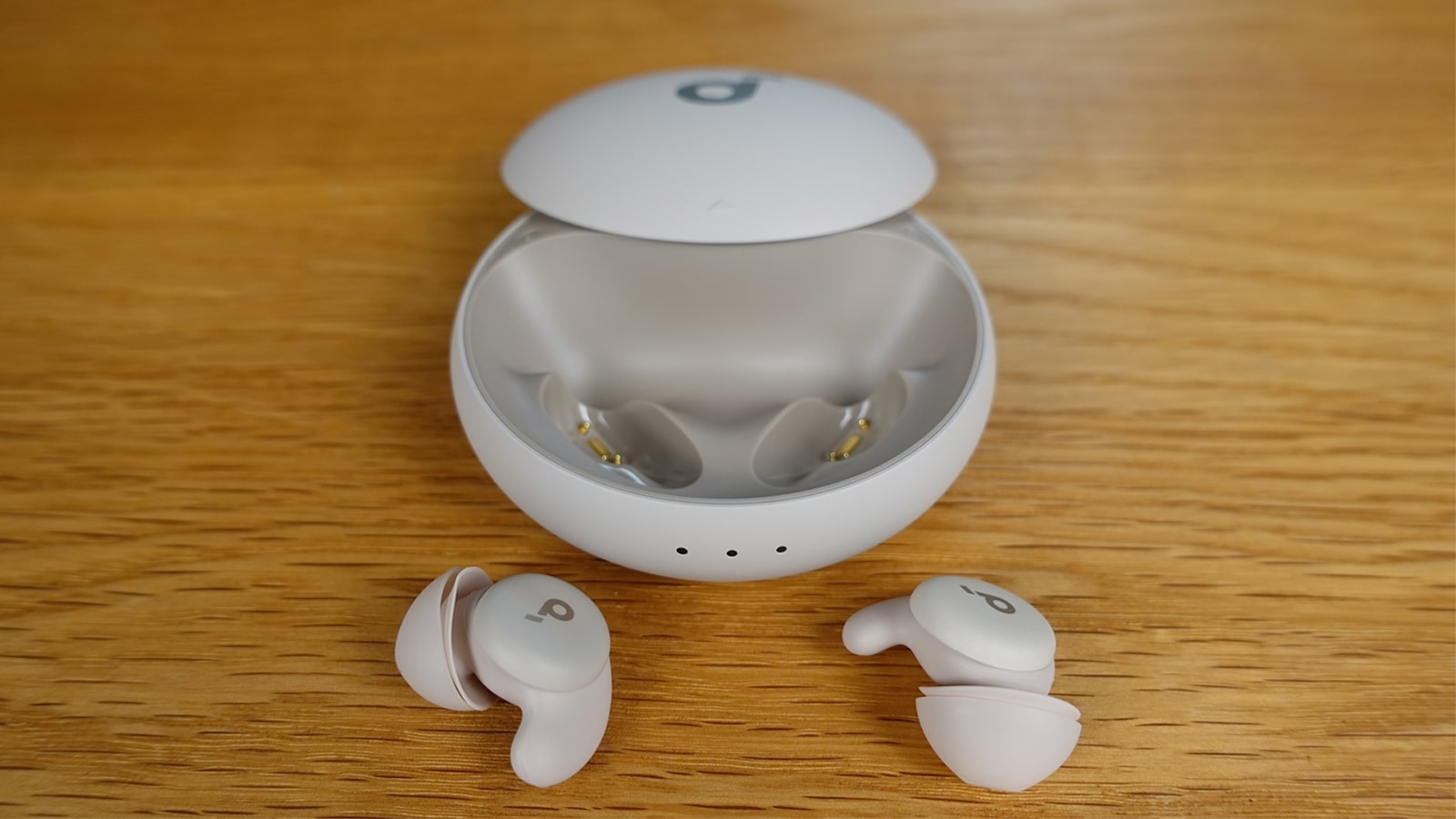
Finally, we come to the Soundcore Sleep A20. If this article was purely dedicated to discussing the most accurate and useful sleep trackers, then the A20s would be nowhere in sight.
However, since I wanted to look at a range of styles of sleep trackers, I thought it was important to include my experience with this new breed of sleep trackers: headphones.
The first time I saw sleep tracking included in headphones was with the Kokoon Nightbuds. I wasn’t impressed by their accuracy, and found the data to be useless when I only wore them for a short while.
I’ve had the same issue with the A20s. They rely entirely on an accelerometer, with no heart rate tracking or other sensors to help the device and algorithm decide if you’re sleeping, or what sleep stage you might be in. It’s like the tracking regressed by ten years.
The sleep stage tracking doesn’t even include REM sleep, with just awake, light, and deep included. So compared to other advanced sleep trackers, you get an incomplete picture.
More importantly, I found it to be very unreliable, often mistaking lying still in bed with being asleep. It consistently got this wrong, night after night.
In the screenshot below, you can see how sleep stage graph from one night with the A20 and the additional movements they report.
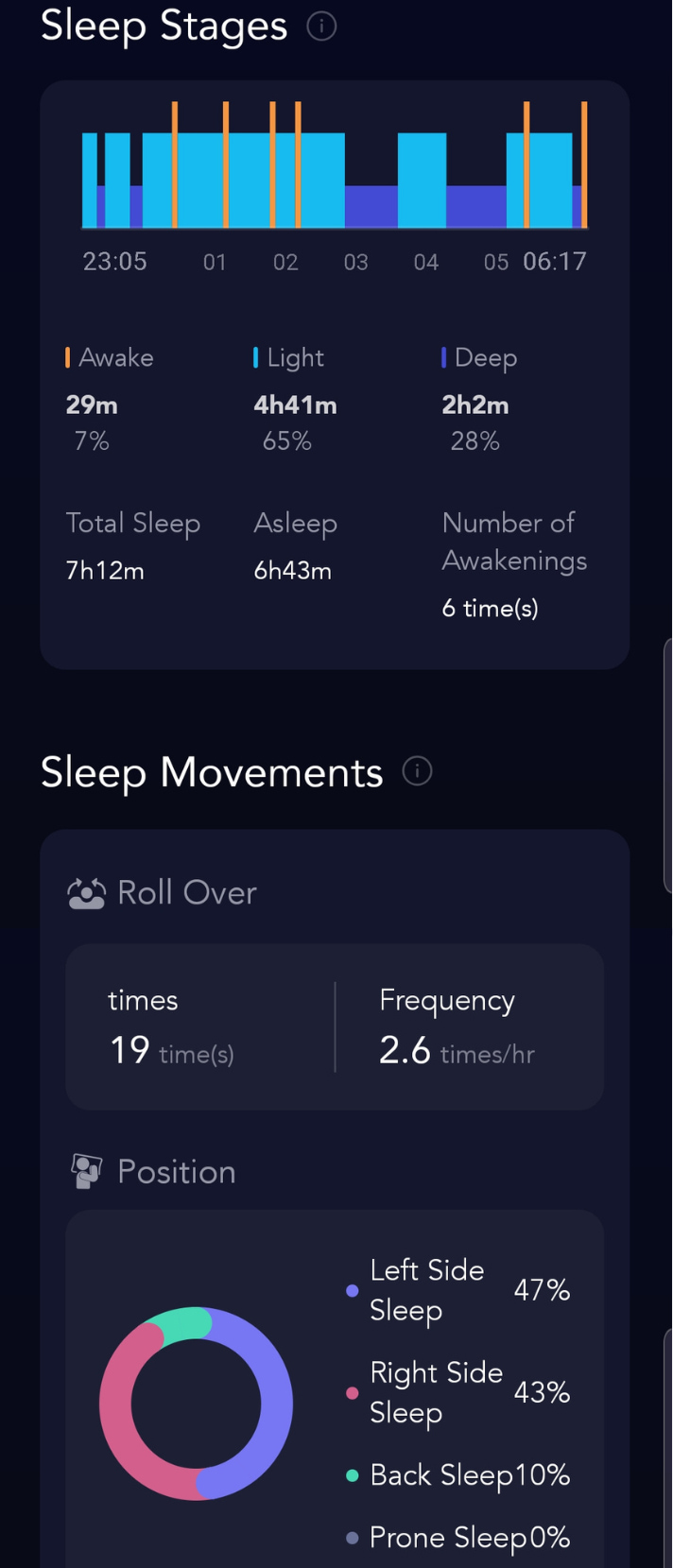
The only points I did like were the extra sleep movement reporting. It’s the first device I’ve had that tells me which side I sleep most on, and how often I roll over. The thing is, I already kind of knew this, and it’s just not helpful unless I’m trying to train myself to sleep in a particular position.
Beyond the accuracy, there is a fundamental problem with sleep tracking in headphones: when you take them out, the tracking ends. So if you take them out in the middle of the night, you get an incomplete picture. And that means that any trends over time will never be as good as the other four devices in this article, or many, many others that you wear all night long.
Now, don’t get me wrong – I really like the A20s for what they are – sleep headphones. My personal view is that they should stick to that one job and do it as well as possible without complicating things. It’s hard enough to make comfortable headphones for sleep without adding unnecessary extras.
I’m currently testing the Ozlo sleep buds, which also apparently have sleep tracking coming in the future. They haven’t released the firmware yet, and I wonder if it’s because it’s not ready or not accurate. If it’s as bad as the A20s, I really hope they never release it.
